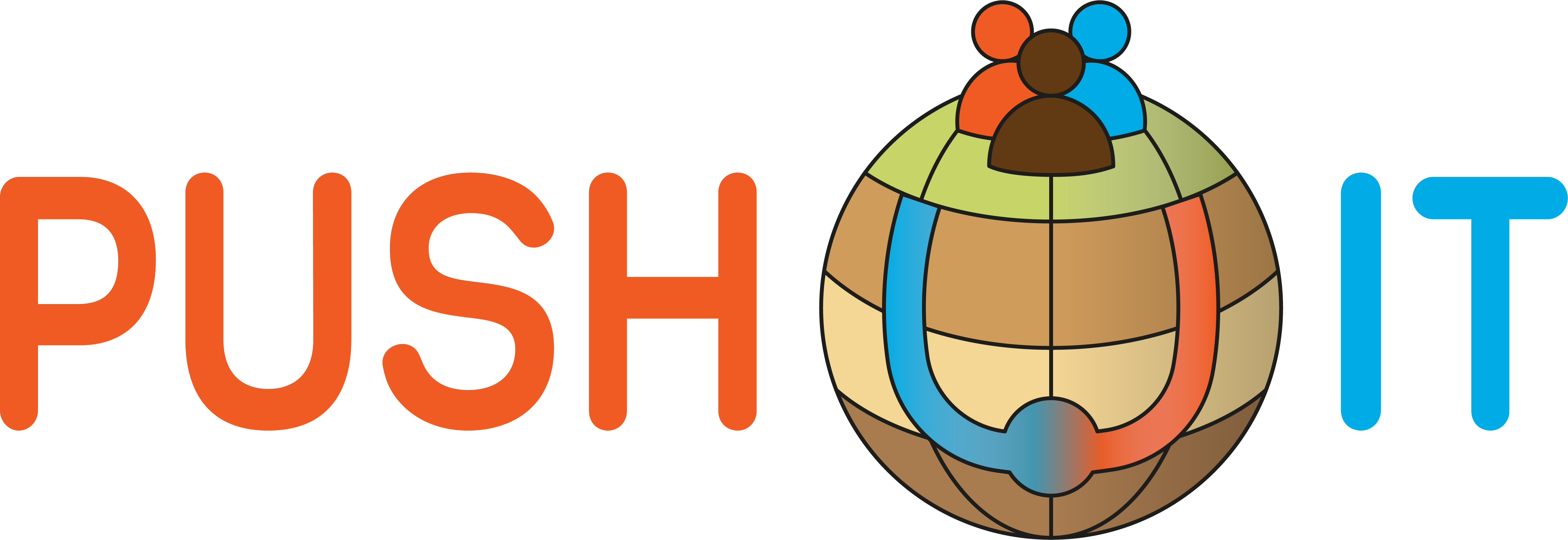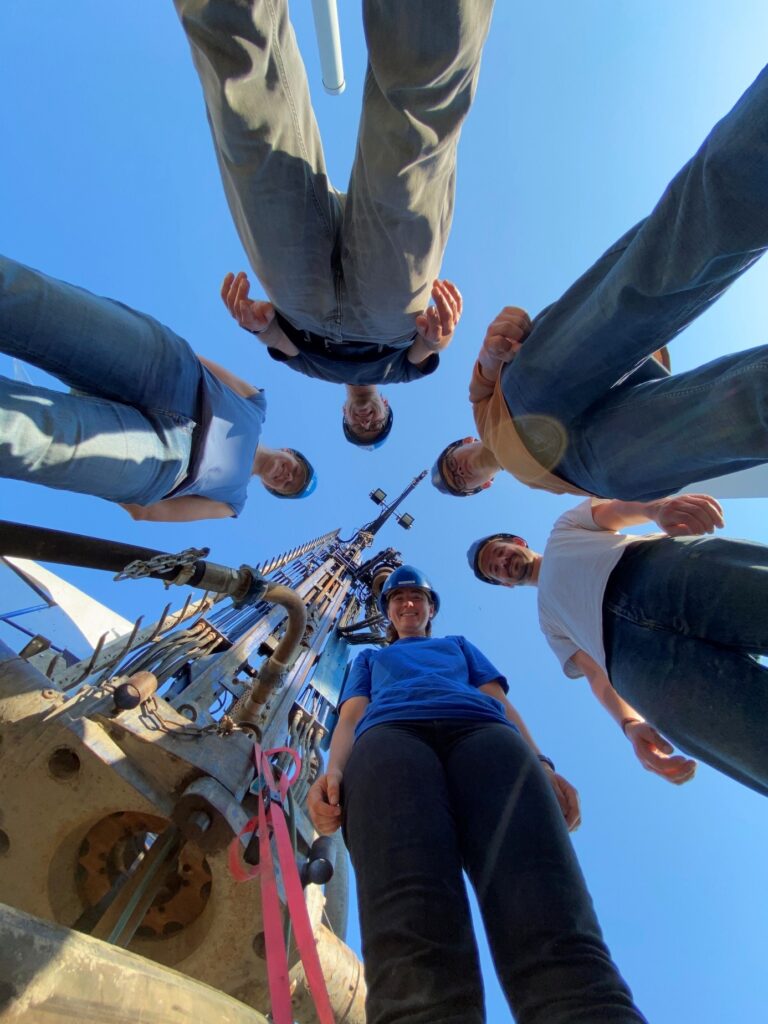Research borehole for ATES successfully completed in Berlin Adlershof
Our team from the German Research Centre for Geosciences GFZ, led by Stefan Kranz and Katrin Kieling, drilled a 410 m deep research well to investigate whether the Hettang sandstones at the Berlin Adlershof site are suitable for an ATES system that should be implemented in the existing district heating network.
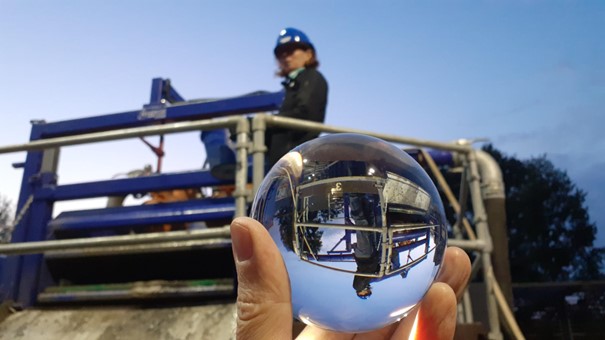
From 29 July to 2 August a sidetrack was drilled from an existing borehole using the directional drilling method, i.e. a branch that leads away from the original borehole at a slight incline. Colleagues from the drilling company Anger’s Söhne Bohr- und Brunnenbaugesellschaft mbH and from the ‘Geoenergy’ section of the GFZ worked together day and night in a 24-hour operation. In order to obtain continuous information on the grain size distribution in the rock and the chemical and mineralogical composition from the drilling section between 211 and 410 m depth, a sample of the drill cuttings was taken and analysed for each metre of drilling. Some of these were characterised directly on site by geoscientist Lioba Virchow using mobile X-ray fluorescence analysis.
Once the drilling work had been successfully completed, various geophysical borehole measurements were carried out in order to further characterise the reservoir rock. The borehole was then completed. For this purpose, a filter was installed between a depth of 371 and 389 metres and then cemented. With the help of GFZ spin-off FOMON GmbH and GFZ Section ‘Geophysical imaging of the subsurface’, fibre optic cables were also installed along the entire casing and filter area to enable continuous monitoring of the temperature along the borehole at 0.5 m intervals, as well as the measurement of acoustic signals and strain measurements.
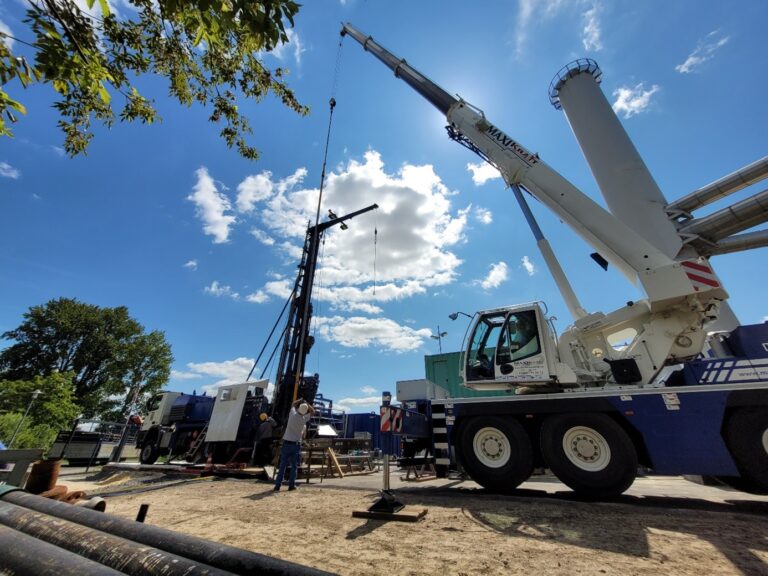
The work was successfully completed in September. This was followed by filter development, i.e. pumping the drilling mud out of the well and initial production of formation water. A short step test was then carried out, which provided information on the productivity of the borehole. Guido Blöcher, hydrogeologist and head of the ‘Sustainable Production Technologies’ working group, says: ‘We have determined a promising productivity index of over 1 l/s/bar, which suggests that good production rates can be achieved with the connected sandstone. This is particularly important for large-scale heat storage.’
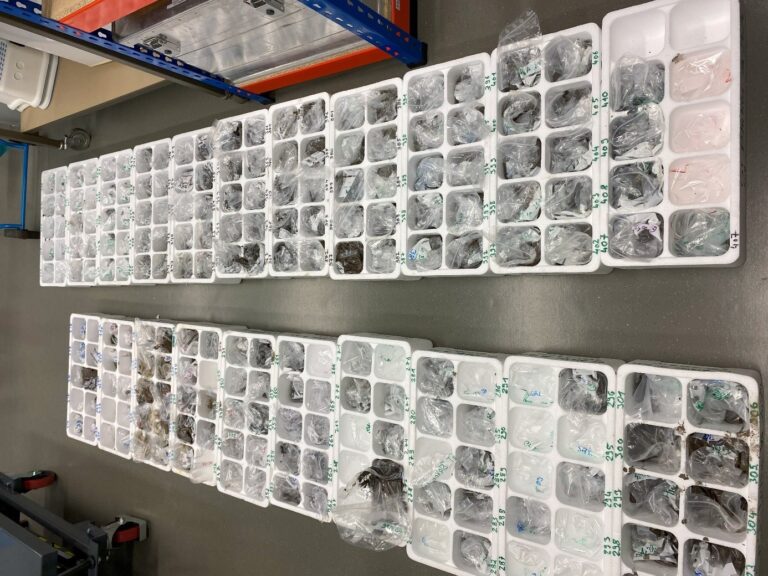
Stefan Kranz, head of the ‘Geothermal Process Engineering and System Integration’ working group, emphasises: “The completion of the research borehole now enables further tests to characterise the storage behaviour of the Hettang sandstone. As part of the PUSH-IT project, we will carry out investigations into the thermal and hydraulic behaviour of the reservoir rock and also look at the influence of temperature on geochemical and microbiological processes together with our partners in the project.” The results will then be incorporated into the realisation of an ATES for the Berliner Blockheizkraftwerks- Träger- und Betreibergesellschaft (BTB). BTB is building Berlin’s largest heat storage facility at the Berlin Adlershof site as part of the ‘Reallabor GeoSpeicher Berlin’ project in cooperation with the GFZ and TU Dresden. The planned aquifer storage facility is intended to contribute to the decarbonisation of district heating in south-east Berlin. A quarter of the heat that currently still comes from the Berlin-Schöneweide coal-fired power plant can be replaced in winter with renewable energy from the aquifer heat storage facility. This should save around 10,000 tonnes of CO2 per year.

PUSH-IT is a project funded by the European Union’s Horizon Europe research and innovation programme under grant agreement No 101096566.
Funded by the European Union. Views and opinions expressed are however those of the author(s) only and do not necessarily reflect those of the European Union. Neither the European Union nor the granting authority can be held responsible for them.
